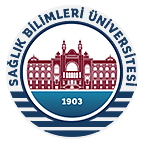ABSTRACT
Destructive properties of nitrogen mustard especially on respiratory system make it an effective chemical weapon with lack of an antidote. The aim of this study was to investigate the role of oxidative stress in mustard toxicity and the protective effect of proanthocyanidine. Rats were separated into three groups each containing fifteen rats. The three groups were control group which were exposed to none, nitrogen mustard group administered nitrogen mustard, and the last group administered nitrogen mustard and fed with proanthocyanidine containing diet (nitrogen mustard plus proanthocyanidine group). We demonstrated the harmful effects of nitrogen mustard over oxidative stress, and the therapeutic effects of proanthocyanidine by both histopathologically and biochemically using the oxidative stress parameters such as malondialdehyde, superoxide dismutase, catalase and glutathione peroxidase. Significant histopathologic lung lesions such as alveolar edema and alveolar congestion were observed in the nitrogen mustard group. Those lesions were less severe in the nitrogen mustard plus proanthocyanidine group. Proanthocyanidine treatment decreased malondialdehyde levels, which were initially elevated by nitrogen mustard administration, while superoxide dismutase, catalase and glutathione peroxidase activities remained similar to those of the nitrogen mustard only group. Our results revealed that oxidative stress has played a major role in mustard toxicity, and proanthocyanidine has had a substantial role in decreasing the toxic outcomes.



